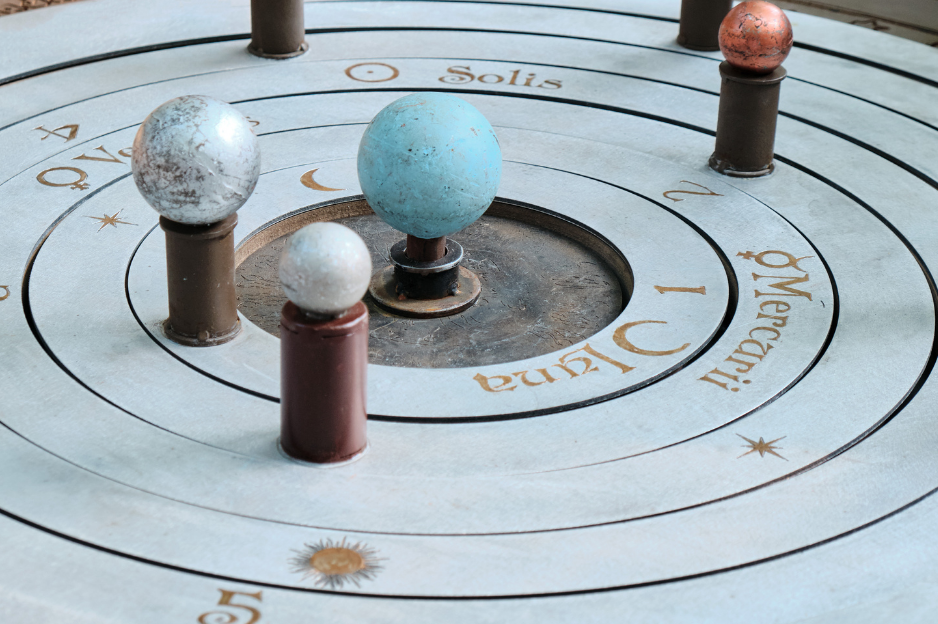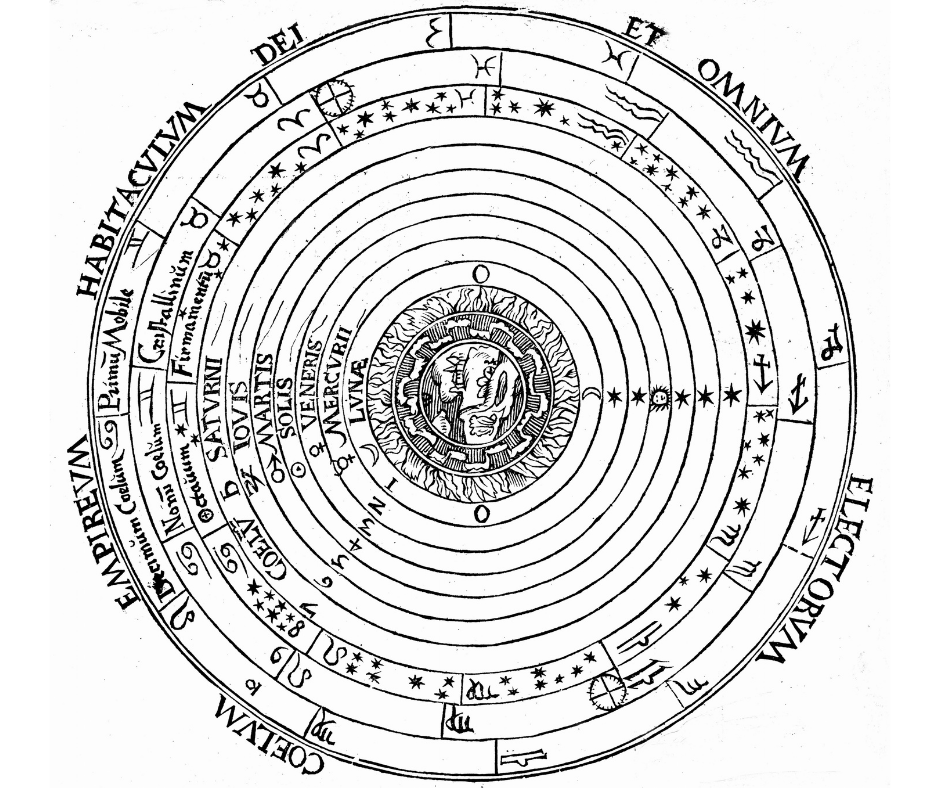Since the start of recorded history, the night sky has fascinated and inspired minds across the world. Ancient drawings and inscriptions, monuments and writing all point to a deep connection and curiosity with the cosmos. But history shows that sometimes our understanding of the way things work, is not always correct. One of the biggest examples of this, is the Geocentric Theory. This was commonly accepted from antiquity right through to the 1600s. So what exactly is geocentric theory?

In A Nutshell
Geocentric Theory, is the theory that the Earth is the center of the universe, and that the sun, moon, stars, and other heavenly bodies revolve around Earth. The theory is based on ancient Greek and Roman philosophy, and is most often associated with the Ptolemaic system. The Geocentric Theory was widely accepted by scientists, philosophers, and historians until the 1600s. The theory was blown wide open though when Nicolaus Copernicus and later Galileo Galilei proposed the heliocentric theory. The Geocentric Theory is still used today by some people, but the heliocentric theory is generally accepted as being more accurate.
Geocentricism is an old-school, pseudoscience theory about the universe. It is an incorrect explanation of how the solar system works, and was debunked by modern science long ago. But the accepted theory did not change over night. There was great resistance to the paradigm shifting heliocentric theory. Even today, some people still believe in geocentric theory. What is the purpose of the geocentric theory, and why was it ever such a big deal in the first place?
The Geocentric Model

One of the first ways to illustrate the geocentric theory was through the use of models. For example, the ancient Greeks used models such as the bronze sphere to illustrate the rotation of the Earth around the sun. The planets were placed inside the sphere and were then rotated so that they appear to be moving around the Earth. This model was used to teach young children about the rotation of the Earth.
This illustration of the Geocentric model above, shows the Earth at the center of the solar system, surrounded by a series of concentric rings. In this model the planets, our moon and the sun are all represented as one of the rings rotating around the Earth. The Sun is located between Mars and Venus. The firmament is represented in the outside layers of the model, beyond Saturn.
Geocentric Theory vs Heliocentric Theory – What’s The Difference?
The main difference between these two theories, is that in the geocentric model, everything revolves around the Earth. In the heliocentric model, everything in the solar system revolves around the Sun. There are other differences too though.
One of the biggest differences between the geocentric and heliocentric theories is the way the solar system is shaped. The geocentric solar system looks like a ball with the Earth at the center. The planets rotate around the Earth, which is stationary in the center of the ball. In the geocentric model, the orbits are also circular. Whereas in the heliocentric model, thanks to the work of Kepler, the orbits of objects around the Sun are known to be elliptical.
Origins Of Geocentric Theory
The theories of geocentricism, originate back to old European civilizations. Particularly the Ancient Greek and Ancient Roman empires. In Ancient Greece, the origins of Geocentricism date back to the very early days, but it is the work of both Plato and Aristotle around 4th Century BC that gave this theory the meat and bones. These philosophers wrote dedicated works to explain the order and function of the geocentric universe, and everything in it.
Later, in Ancient Egypt during the era of the Roman Empire, circa 2nd Century AD, Claudius Ptolemy standardised the geocentric model. Bringing together all the works of the Egyptian and Babylonian astronomers before him. It was not identical to the geocentric models of Greece, but expanded on these, to create the model that would be accepted for centuries to come.
This model was the generally accepted model of the Solar System, and Universe until the Middle ages circa 1600’s. However, that’s not to say that there weren’t other theories out there. In ancient Greece, the early roots of heliocentric theory were suggested by Aristarchus, student of Strato. He suggested the Earth was just one of the many planets that rotated around the sun, but his theories were rejected in favor of the geocentric theories of Ptolemy and Aristotle.
Resistance To Change
It’s not unfair to say that both scientific and religious dogma stood in the way of change. While Aristarchus theories on the heliocentric solar system saw resistance in antiquity, so did the theories of Copernicus in the 16th Century. It’s no surprise really. The accepted geocentric model had been widely agreed on for around 1500 years. To suggest that a core belief, in how the Earth and the heavens align was flawed. To challenge that reason and purpose, was never going to be easy.
Over the course of around 200 years, from Copernicus, Kepler and later Galileo, the geocentric model could no longer justify what science was proving. And what people could see for themselves with the advent of the telescope. The heliocentric model finally became accepted over time. The paradigm shifted, and made way for further exploration into the sun centered solar system.
Geocentric Orbits Today
Today, when we refer to geocentric orbits, these are in reference to objects such as the moon, and the various satellites that are in orbit around the Earth. This also includes any space debris that is in orbit around the Earth. Objects like the International Space Station and the many GPS satellites are all examples of bodies with a geocentric orbit. The other planets, and the sun, however, are not.
A satellite may also have a geostationary orbit, where they the orbital period of the satellite matches the rotation of the Earth. In this type of orbit, satellites appear to be stationary in the sky, hovering above the same location.